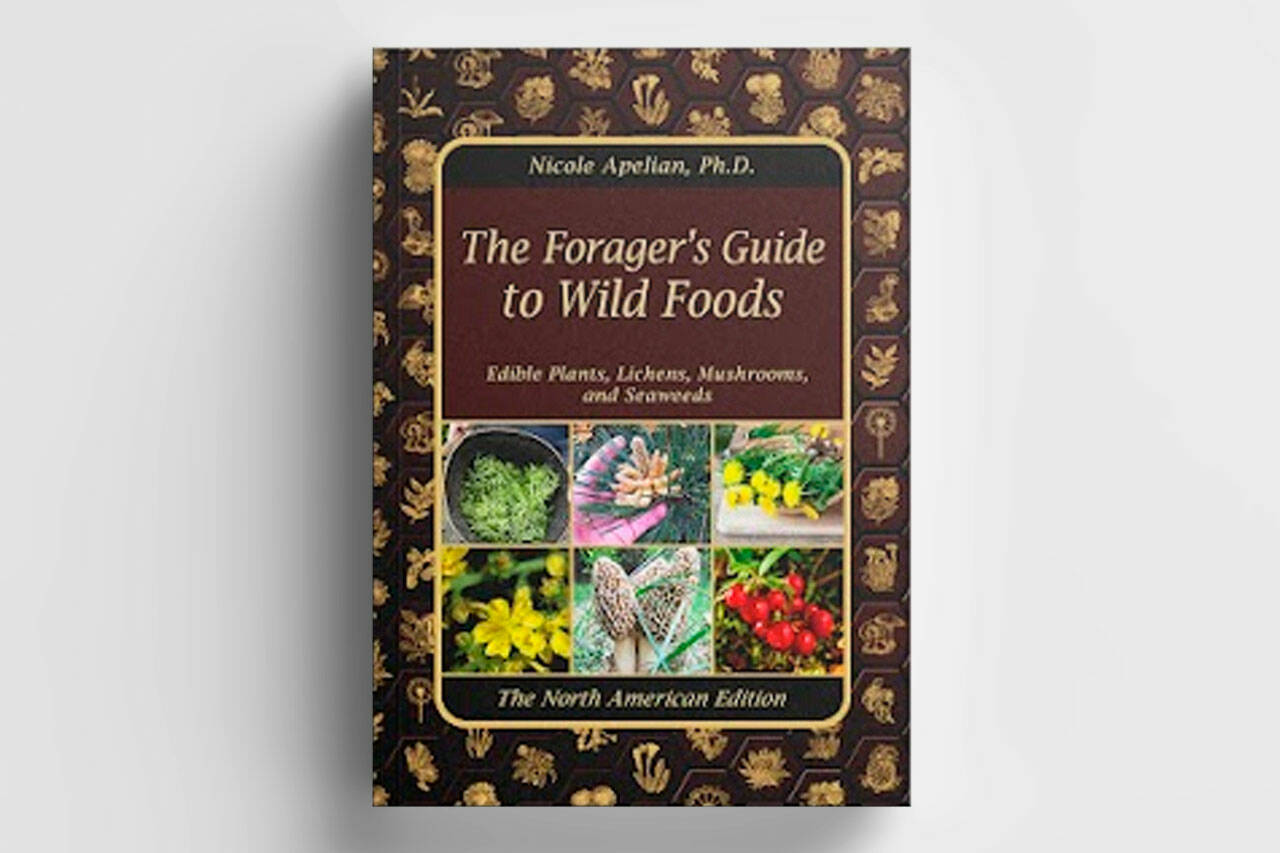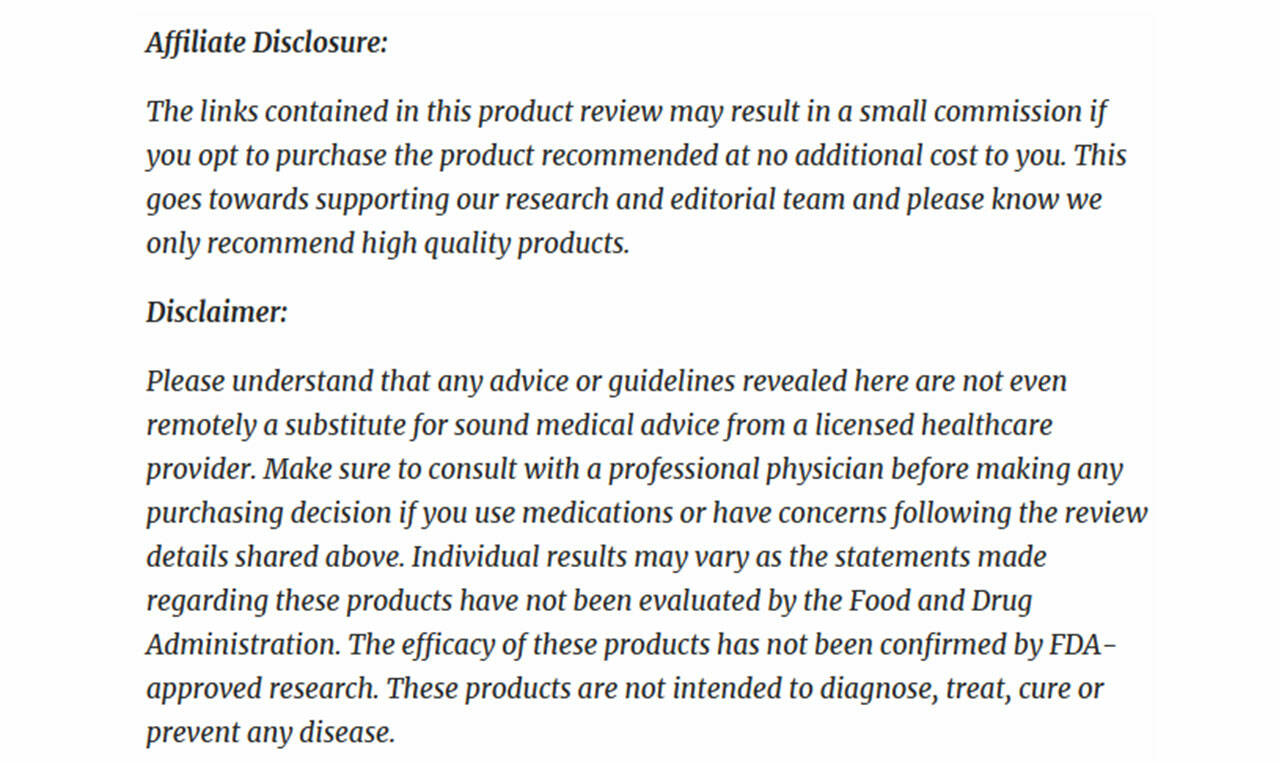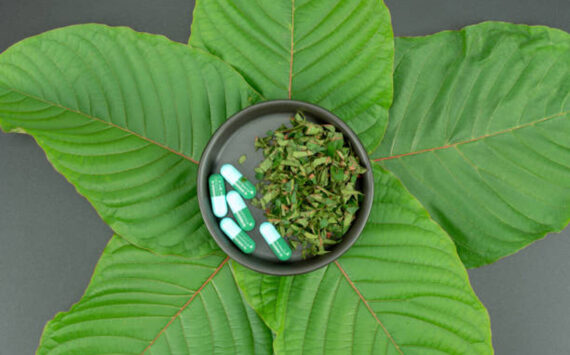The Forager’s Guide to Wild Foods is a 300+ page book explaining how to find valuable plants and herbs in your own backyard.
Written by biologist, herbalist, and survival skills instructor Dr. Nicole Apelian, Ph.D., The Forager’s Guide to Wild Foods features dozens of natural ingredients you can find in your backyard for natural remedies, healthy food, and other benefits.
Does The Forager’s Guide to Wild Foods live up to the hype? What will you learn in The Forager’s Guide to Wild Foods? Keep reading in our review to find out everything you need to know about the book today.
What is The Forager’s Guide to Wild Foods?
The Forager’s Guide to Wild Foods is a book available exclusively through ForagersGuide.com.
Priced at $37, the book is available in both digital and physical formats. You can download the book online today immediately. Or, you can buy a physical copy of the book and have it shipped to your address (plus, all physical copies also come with a digital version).
In The Forager’s Guide to Wild Foods, you’ll discover instructions on how to prepare wild foods for several purposes, including how and when to harvest foods, how to identify the best plants and herbs in your own backyard, and how to use proven foraging skills to maximize the value of wild foods.
The Forager’s Guide to Wild Foods was written by Dr. Nicole Apelian, an herbalist, biologist, survival skills instructor, and mother. Dr. Apelian condensed her decades of research into a comprehensive foraging book. Today, anyone can use that book to find forgeable ingredients in their area.
How Does The Forager’s Guide to Wild Foods Work?
Many are surprised to discover how many valuable plants, herbs, mushrooms, and other ingredients are in their own backyards.
In The Forager’s Guide to Wild Foods, you can discover things like morels, which are mushrooms worth more than $200 a pound, that could be growing in your area. You can learn how to identify, prepare, and how to store morels for later use. Morel mushrooms grow in all 50 states – and you can even sell them in dried form on Amazon or through other retailers as a side hustle.
As you leaf through The Forager’s Guide to Wild Foods, you’ll discover things like:
- 400+ plants that could be found in your backyard or local area
- Huge, high-resolution photographs of each plant and herb
- The best plants, herbs, mushrooms, and other ingredients in all 50 states
- Extensive details of each plant, including the benefits, preparation instructions, recipes, and medicinal properties of each plant
- Time-tested recipes, remedy instructions, and delicious foods you can prepare for each plant
In short, The Forager’s Guide to Wild Foods explains everything you need to know about wild plants growing in your area, helping you forage for survival, sustenance, profit, natural remedies, medicine, and more.
What Will You Learn in The Forager’s Guide to Wild Foods?
The Forager’s Guide to Wild Foods features 400+ plants, herbs, roots, mushrooms, and other natural ingredients in the world around you.
Here are some of the topics covered in The Forager’s Guide to Wild Foods:
How to Identify Morel Mushrooms (Worth $200 Per Pound) That Could Be Growing in Your Area: You can sell morel mushrooms on eBay and Amazon for $50 to $200 per pound. In The Forager’s Guide to Wild Foods, Dr. Apelian explains how to identify the distinctive mushroom. It grows naturally in all 50 states, and it could be growing in your backyard. There are no similar look-alikes to the morel mushroom, making it easy to spot after you learn to identify it. In The Forager’s Guide to Wild Foods, you’ll discover how to dry the morel mushrooms for long-term storage, reconstitute the mushrooms later by soaking them in water, and how to sell the mushrooms online for maximum profit.
How to Use a Common Weed to Make Bread: There’s a specific type of wild plant that grows naturally throughout North America, and you can use this plant to make bread. Many people cut away this plant and throw it away. However, Dr. Apelian recommends gently harvesting the seeds of this plant, grinding them into gluten-free flour, and making bread with the flour. In The Forager’s Guide to Wild Foods, you can discover the name of this weed, how to identify it, and how to make delicious, nutritious, gluten-free bread from the weed.
How to Harvest “Nature’s Prozac” for Anxiety Relief Around Your Home: Dr. Apelian has identified a plant she calls “Nature’s Prozac” because of its anti-anxiety effects. In The Forager’s Guide to Wild Foods, Dr. Apelian explains how to identify and prepare this plant. She recommends steeping one teaspoon of clean, fresh leaves in 1 cup of boiling water for 10 minutes, for example, to help you fall asleep faster. The plant has potent anti-anxiety effects, giving it the name “Nature’s Prozac.”
How to Enjoy Vicodin-Like Effects from a Driveway Weed: A weed growing naturally in your driveway could have “Vicodin-like effects,” according to Dr. Apelian. In The Forager’s Guide to Wild Foods, you’ll discover how to turn a pesky weed into a pain-fighting ally. The weed is similar to the stinging nettle plant. You can use the hairs of this plant to provide Vicodin-like effects. Just apply the hairs of the plant topically to your skin to enjoy surprisingly powerful relief.
Why Cattails Are the Ultimate Swamp Survival Food: Cattails are common throughout swamps. However, they’re also surprisingly nutritious. In fact, herbalists refer to cattails as the “supermarket of the swamp” because you can eat every part of the plant – even the pollen. They’re a four-season food that could save your life and keep you strong through the darkest times. It could be the difference in a life-or-death survival situation.
How an Herb Could Empty Your Bowels Effortlessly Each Morning When Added to Coffee or Tea: The Forager’s Guide to Wild Foods discusses peppermint, which has antispasmodic properties that could help relax muscles in your digestive tract, loosening your stools and help your digestive tract function normally. Dr. Apelian claims peppermint can reduce IBS symptoms and pain. In fact, the American College of Gastroenterology even recommended peppermint in 2021 as a natural digestive remedy.
How to Create a Natural Painkiller from a Common Plant: For centuries, indigenous people of North America used a common plant as a natural painkiller. In The Forager’s Guide to Wild Foods, you can discover how a stalk or a leaf of this plant could have powerful natural painkilling properties. The plant secrets a white, milky substance linked to pain killing effects, and it’s completely legal to forage, harvest, and prepare the plant to create a painkilling elixir.
How to Find a Superweed that Kept Communities Alive During the Great Depression: During the Great Depression, entire communities survived because of a plant called Lamb’s Quarters. As discussed in The Forager’s Guide to Wild Foods, this plant grows across the United States and has better nutritional value than spinach or kale. Also known as wild spinach, Lamb’s Quarters can save you from starvation during difficult times.
The Most Common Edible Trees Growing Around You: You can eat certain trees. Yes, some of North America’s indigenous trees are edible. In The Forager’s Guide to Wild Foods, you can discover the most common edible trees growing in your state, including trees that produce delicious foods – like chestnuts. You can discover how to prepare the bark, leaves, twigs, seeds, pollen, roots, flowers, and sap of certain trees to create sustenance and feed your family year-round.
How to Make an Elderflower Probiotic Remedy: Probiotic supplements are crucial for gut health. In The Forager’s Guide to Wild Foods, you can discover how to make your own probiotic supplement by creating an elderflower probiotic. This probiotic beverage can reduce inflammation and regulate bowel movement.
Why You Should Never Chop Down this Backyard Tree: In The Forager’s Guide to Wild Foods, you can discover a certain tree found in backyards across North America that you should never chop down. If you find this yellow tree in your backyard, then you could have a powerful source of natural remedies. Witch hazel is found in different medicines, and in The Forager’s Guide to Wild Foods, you can discover how to prepare witch hazel for joint health and create your own joint salve.
How to Use a Mushroom to Help with Autoimmune Conditions: Dr. Apelian claims a specific mushroom, reishi, helped her get out of a wheelchair. She takes a reishi mushroom tincture daily to help with her MS, and she continues to recommend reishi as a medicinal mushroom for autoimmune disorders and other chronic conditions. In The Forager’s Guide to Wild Foods, you can discover how to spot that mushroom across North America.
Why an “Annoying Weed” is Surprisingly Edible and Nutritious: In The Forager’s Guide to Wild Foods, you can discover a weed that is packed with surprising nutritional value. Every 100g of the weed – which is more of an herb – contains 23g of protein and 25g of fiber, making it an optimal source of both macronutrients. Most people aren’t getting their daily recommended intake of fiber. Instead of killing this weed when you spot it on your lawn, you should harvest it and prepare it based on the recipe in The Forager’s Guide to Wild Foods.
How to Use Dandelions to Make Wild Bread: Dandelions have been found in many natural remedies for centuries. In The Forager’s Guide to Wild Foods, however, you can also find out how to use dandelions to make wild bread. The book explains how to make a crispy crust of wild dandelion bread, putting the dandelions around your home to good use while making a freshly baked loaf of bread with a sweet dandelion flavor.
What to Do Immediately After Identifying Coltsfoot: In The Forager’s Guide to Wild Foods, you can discover how to spot a coltsfoot plant and the steps to take immediately after finding it. Coltsfoot is known as Tussilago in Latin, which translates to “acting on cough.” It can unblock your airways, fight colds and flus, and stop uncontrollable coughs, among other benefits.
How to Use a Prairie Plant to Save Your Life: In The Forager’s Guide to Wild Foods, you can discover a specific prairie plant that helped early western pioneers survive tough times. They ate the bulbs and leaves of the plant raw. Or, they fried the plant with lard and other greens to make a nutritious tincture. According to Dr. Apelian, knowing how to identify this plant “may save your life in the next crisis, just as it saved others in the past.”
How to Create a Relaxing, Calming Smoke from Mullein: Mullein is a popular natural remedy – and a common plant found throughout North America. When you smoke mullein, you can cleanse your lungs. The smoke of the plant creates a relaxing, calming, soothing sensation along your airway, helping to dislodge mucus and open-air passageways. In The Forager’s Guide to Wild Foods, you can discover how to roll up the plant to create a makeshift herbal cigarette, then inhale the smoke deeply to get rid of coughing.
Why a Common North American Plant is Delicious and Edible: The Forager’s Guide to Wild Foods explains how to find “earth almonds” around you, including how to eat those almonds raw out of the ground – or save them dry for later use.
Why It’s Illegal to Grow Gooseberry in Some States (But Always Legal to Forage Gooseberry): It’s illegal to grow gooseberry in many parts of the United States. However, there’s no law preventing you from foraging for gooseberry. A single gooseberry bush can give you 12lbs of gooseberry, and you can return year after year to harvest as much as you like. In The Forager’s Guide to Wild Foods, you can discover the value of gooseberry and how to identify the plant near you.
A Wild, Popcorn-Like Plant Ideal for Salads and Cooking: A specific plant has a popcorn-like effect when heated. It tastes better than popcorn and has a unique, nutty flavor – all while being gluten-free and easy to harvest.
50 Edible Berries All Across North America: The Forager’s Guide to Wild Foods explains 50 common edible berries found throughout North America, including their nutritional value, preparation instructions, and more.
Beneficial Weeds You Shouldn’t Pull from Your Garden: Many of the plants in The Forager’s Guide to Wild Foods are weeds. People usually get rid of these weeds. However, you can discover the value of these weeds – and the specific steps to take with these weeds to maximize their value instead of getting rid of them.
How to Maximize the Value of an Alligator Tree: In The Forager’s Guide to Wild Foods, you’ll discover what to do immediately after finding an alligator tree. Alligator trees have bark that looks like alligator skin. The Zuni tribe steamed the berries of this tree to make a natural remedy.
Wild Foods that Fertilize Your Gut: Certain foods, berries, plants, bark extracts, and other herbs can fertilize your gut. Some act as prebiotics to fuel your gut bacteria, while others have natural probiotics.
Why Having a Certain Tree in Your Backyard Could Get You Arrested: Some trees have potent medicinal properties and are technically illegal. Although rarely enforced, these three laws could work in your favor when you understand the value of the tree.
Wild Edibles that Vanish During Times of Crisis: Many foragers know the most valuable plants and herbs in a time of crisis. By learning to spot these herbs today, you can harvest them before they vanish in a time of crisis.
Foraging Calendar, Including the Best Plants for Each Month of the Year: Foraging varies throughout the year. In The Forager’s Guide to Wild Foods, you can discover a foraging calendar featuring the best plants to harvest each month.
A Superberry that Could Make You Rich – and Where to Find It: A specific type of berry, growing naturally across North America, could make you rich. In The Forager’s Guide to Wild Foods, you can discover how to identify and gather that berry for a profit.
The Forest Plant the Amish Love: The Amish knew about a specific forest plant for years as a natural remedy before herbalists discovered it. In The Forager’s Guide to Wild Foods, you can discover how to find and prepare this plant.
Natural Stress Relievers and Energy Boosters: The right herbs and plants can boost energy, relieve stress, and provide other powerful effects.
A Giant Mushroom to Feed Your Entire Family: A specific type of mushroom extract could feed your entire family for a week. In The Forager’s Guide to Wild Foods, you can discover where to find this mushroom and how to prepare it.
Complete Recipes for Each Plant: The Forager’s Guide to Wild Foods doesn’t just explain how to spot each plant and where to find it; the guide also explains a recipe for each plant, including specific instructions on how to prepare it.
Natural Remedies They Should Teach in Schools: For centuries, early pioneers relied on the natural world as their pharmacy. Over the years, these lessons have been lost. In The Forager’s Guide to Wild Foods, you can discover some of the best natural remedies they should teach in schools – but don’t.
Why Buy The Forager’s Guide to Wild Foods?
Some of the reasons to buy The Forager’s Guide to Wild Foods include:
Get a food insurance policy for hard times. Life is unpredictable, and we live in an uncertain world. The Forager’s Guide to Wild Foods can be a crucial part of a bug-out bag. Others leave a copy of the book next to their emergency food supply. Some buy a copy to place in their emergency shelter. It could be a life-changing resource in the future.
Help navigate the outdoors. Whether you’re camping, hunting, hiking, foraging, or just exploring the outdoors, The Forager’s Guide to Wild Foods can help you navigate the wilderness, identify the most valuable plants and herbs outdoors, and take advantage of the cornucopia of natural ingredients in the world around you.
Discover medicinal plants growing around your home. The Forager’s Guide to Wild Foods features plants with Vicodin-like benefits, herbs with natural painkilling properties, and other plants with medicinal effects.
Find healthy foods you can eat all around your home. You don’t need to go to the supermarket to find tasty, nutritious food. You can look around your home. The Forager’s Guide to Wild Foods features foods you can eat or feed to your family.
Save money at the supermarket. Instead of spending a premium on organic food at your supermarket, you can find organic food in your own backyard. In The Forager’s Guide to Wild Foods, you can discover how to replace common supermarket ingredients with natural remedies and foods.
Discover a new skill. Some use The Forager’s Guide to Wild Foods to simply discover a new skill. You can learn more about the world around you, pass on valuable skills and knowledge to children and grandchildren, or just impress others with your knowledge.
Bonuses Included with The Forager’s Guide to Wild Foods
When you buy The Forager’s Guide to Wild Foods online today, you get three bonus guides to enhance the value of the core book.
Each purchase comes with three bonus eBooks, including wilderness survival guides, additional household remedies, and the best long-lasting foods to make at home.
Here are the bonuses included with all new purchases of The Forager’s Guide to Wild Foods:
Bonus eBook #1: The Wilderness Survival Guide: Written by Peta Stange, this guide explains some of the best survival skills that could save your life when outdoors. It’s a bug-out resource, a camping guide, and an outdoor survival plan rolled into one. You can use it to stay safe while foraging – or to protect your family in a time of crisis.
Bonus eBook #2: Household Remedies: How to Recover Naturally at Home: Before modern medicine, our ancestors used natural remedies to cure illnesses and diseases. In this bonus guide, you can discover remedies like black radish cough syrup, vinegar socks, and other common household ingredients you can use to help recover from ailments.
104 Lost Foods Items That Can Be Used for Survival: This eBook, written by Sarah Davis, features dozens of foods you can prepare at home to prepare for any upcoming situation. By preparing these foods the right way, you can ensure they last a long time, helping you survive through uncertain times or times when it’s difficult to access food.
The Forager’s Guide to Wild Foods Pricing
The Forager’s Guide to Wild Foods is priced at a one-time fee of $37. You can buy the digital-only or printed version (which also comes with a digital copy).
Here’s how pricing breaks down:
- Digital eBook: $37
- Physical Book + Digital eBook: $37 + $9.99 Shipping
Whatever purchase you choose, you receive immediate access to the digital copy of The Forager’s Guide to Wild Foods.
The Forager’s Guide to Wild Foods Refund Policy
The Forager’s Guide to Wild Foods is backed by a 60-day money-back guarantee. You can request a complete refund on your purchase within 60 days with no questions asked.
If you’re not completely satisfied with your purchase, then you can request a complete refund – and you can even keep both the physical and digital copy of the book (although the $9.99 shipping fee is non-refundable).
About Dr. Nicole Apelian
Dr. Nicole Apelian, Ph.D., is an herbalist, mother, survival skills instructor, and biologist. She graduated with a degree in Biology from McGill University in Canada. She also has a Master’s degree in Ecology from the University of Oregon. Plus she has a Doctorate from Prescott College, which she earned while working as an anthropologist and ethnobotanist in Botswana.
After spending years living among the San Bushmen of the Kalahari Desert, one of the last hunter-gatherer tribes on the planet, Nicole gained crucial survival and foraging skills.
Dr. Apelian attributes those foraging skills to her own health and wellness. After being diagnosed with Multiple Sclerosis, Dr. Apelian found little relief from prescription medication. Instead, she used natural remedies to treat her condition. These natural remedies helped Dr. Apelian get out of her wheelchair and continue living a happy, healthy, and active life.
In 2015, Dr. Apelian appeared on the History Channel’s TV show Alone, where she survived in the wilderness for 57 days, subsisting mostly on wild plants for food and medicine.
Today, Dr. Apelian continues to make it her life mission to share her plant knowledge with the world. In The Forager’s Guide to Wild Foods, Dr. Apelian has distilled 20+ years of plant knowledge into a 300+ page book, helping anyone discover natural remedies and foods in the world around them.
About The Lost Herbs
The Forager’s Guide to Wild Foods is published by The Lost Herbs, an Illinois-based publishing company offering a range of guides online.
The Lost Herbs is led by Dr. Nicole Apelian. At TheLostHerbs.com, you can discover free natural remedy recipes, paid eBooks and guides, and other information about the world around you.
You can contact The Lost Herbs and the customer service team via the following:
- Email: foragersguide@thelostherbs.com
- Mailing Address: 2549 Waukegan Road PMB 45933, Bannockburn, IL 60015
Final Word
The Forager’s Guide to Wild Foods is a 300+ page book featuring hundreds of plants, roots, mushrooms, herbs, trees, and other natural ingredients in the world around you.
By following The Forager’s Guide to Wild Foods, you can discover some of the best natural remedies and medicines early pioneers used to survive. You can also discover foods, beverages, tinctures, and other foods all around you – including herbs you can sell online for a profit.
To learn more about The Forager’s Guide to Wild Foods or to buy the guide online today, visit the official website at ForagersGuide.com.
SIMILAR SURVIVAL GUIDE TO COMPARE:







